I'm trying to determine the time that it takes for a machine to receive a packet, process it and give back an answer.
This machine, that I'll call 'server', runs a very simple program, which receives a packet (recv(2)) in a buffer, copies the received content (memcpy(3)) to another buffer and sends the packet back (send(2)). The server runs NetBSD 5.1.2.
My client measures the round-trip time a number of times (pkt_count):
struct timespec start, end;
for(i = 0; i < pkt_count; ++i)
{
printf("%d ", i+1);
clock_gettime(CLOCK_MONOTONIC, &start);
send(sock, send_buf, pkt_size, 0);
recv(sock, recv_buf, pkt_size, 0);
clock_gettime(CLOCK_MONOTONIC, &end);
//struct timespec nsleep = {.tv_sec = 0, .tv_nsec = 100000};
//nanosleep(&nsleep, NULL);
printf("%.3f ", timespec_diff_usec(&end, &start));
}
I removed error checks and other minor things for clarity. The client runs on an Ubuntu 12.04 64-bit. Both programs run in real-time priority, although only the Ubuntu kernel is real time (-rt). The connection between the programs is TCP. This works fine and gives me an average of 750 microseconds.
However, if I enable the commented out nanosleep call (with a sleep of 100 µs), my measures drop 100 µs, giving an average of 650 µs. If I sleep for 200 µs, the measures drop to 550 µs, and so on. This goes up until a sleep of 600 µs, giving an average of 150 µs. Then, if I raise the sleep to 700 µs, my measures go way up to 800 µs in average. I confirmed my program's measures with Wireshark.
I can't figure out what is happening. I already set the TCP_NODELAY socket option in both client and server, no difference. I used UDP, no difference (same behavior). So I guess this behavior is not due to the Nagle algorithm. What could it be?
[UPDATE]
Here's a screenshot of the output of the client together with Wireshark. Now, I ran my server in another machine. I used the same OS with the same configuration (as it is a Live System in a pen drive), but the hardware is different. This behaviour didn't show up, everything worked as expected. But the question remains: why does it happen in the previous hardware?

[UPDATE 2: More info]
As I said before, I tested my pair of programs (client/server) in two different server computers. I plotted the two results obtained.

The first server (the weird one) is a RTD Single Board Computer, with a 1Gbps Ethernet interface. The second server (the normal one) is a Diamond Single Board Computer with a 100Mbps Ethernet interface. Both of them run the SAME OS (NetBSD 5.1.2) from the SAME pendrive.
From these results, I do believe that this behaviour is due either to the driver or the to NIC itself, although I still can't imagine why it happens...